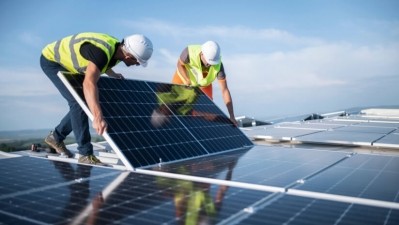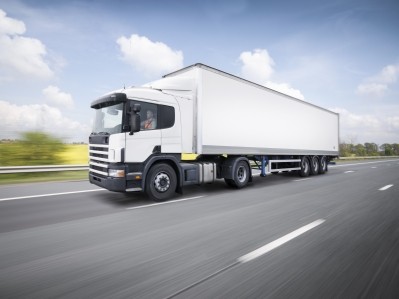Short read
Choosing the right renewable energy for your factory

The UK’s target to reach net zero by 2050 relies heavily on a sustainable energy transition.
Renewable energy in the simplest of terms is natural, self-replenishing forms of energy generating that have a low or zero carbon footprint. Examples include wind, solar, bioenergy and geothermal, to name a few.
While ‘green’ and ‘clean’ energy is often used interchangeably, the National Grid notes a key difference between these two types of renewable energies.
Clean energy produces energy without emissions – although its manufacture or maintenance can sometimes have a ‘carbon cost’. The National Grid gives the example of an environment having to be cleared to create a hydroelectric plant with a dam.
Green energy, on the other hand, comes from completely natural sources which have low or no environmental impact in their creation and/or use.
Conversely, non-renewable energy includes fossil fuels, which can occur naturally but are restricted in their supply. They often taken hundreds of thousands of years to form, must be extracted from the earth, and when burnt (to create energy) emit greenhouse gases.
The implementation of renewable energy has been growing in popularity – and not simply because of Corporate Social Responsibility. Today’s businesses are waking up to the fact that generating energy in a sustainable way is a great way of driving higher profits.
While consumers latch onto ‘well intentioned’ brands, advances in technologies like solar panels, coupled with the fluctuations in grid energy prices have made the payback of such things an ever-enticing option.
Taking sensible steps
Speaking on a recent Food Manufacture editorial roundtable (watch here), Frank Gordon, director of policy for the Association for Renewable Energy and Clean Technology (REA) explained that the right technology must be assessed on a “site-by-site basis” and seeking advice from a credible provider is a must.
“We recommend going to a reputable supplier such as E.ON and getting them to give you an assessment of what would suit your particular plant machinery and premises,” he continued.
E.ON often undertakes what its director of B2B sales, James Cotrrill, described as “a phased approach”, which begins with a feasibility study.
This indicates what kinds of renewable energy will work for the site in question. For example, while wind turbines have their place (such as the Walkers Crisps wind turbine at the Skelmersdale site in West Lancashire) and with Labour’s lifting of the ban on onshore windfarms likely to make their installation easier, they are generally not your first port of call. This is because they require a lot more work before installation, such as your proximity to an airport and bird surveys (i.e. checking migration patterns to ensure birds are not harmed by newly erected turbines en route).
You may also need to consider ‘shadow flicker’ – with studies suggesting nausea can be caused from the shadows cast by turbines. So if you’re near to a residential area this could be an issue.
“You can look at wind turbines if you're in the right area. I definitely think they can work and we have made them work, but it's about doing that feasibility study,” added Cottrill.
The turbine at the PepsiCo-owned facility in Lancashire was managed by E.ON and produces around 25% of the Skelmersdale plant’s energy.
Cottrill continued: “You can take a phased approach where you go for that low hanging fruit – with solar – but then look at potentially of installing a wind turbine a bit further down the line because it's going to take you a lot longer to get through the planning and to fruition.”
Solar – the lowest hanging fruit
Tom Maidment, group product sustainability senior manager at Hilton Foods, agreed: “We wouldn't be against necessarily wind turbine on our site, but we think something like that is of such a scale and potentially so disruptive to normal operations whilst it's being erected, that the better approach might be for it to be either cited elsewhere or to be led by someone for whom that's their specialism.
“Heat pumps and solar are probably the most appropriate technologies to be considering.”
These technologies are both already in operation at Hilton, but the quickest win, and arguably a manufacturer’s starting point for their renewable journey, is solar panels. According to the panel of experts on the roundtable, they’re really low maintenance and the return on investment is between three and four years.
“You know how much your energy is going to be for the next 25 years once you've installed solar panels,” said Maidment.
Earlier this year, Heck Foods installed a 235kwh Solar PV System its North Yorkshire HQ, which can generate around 20% of the factory’s energy.
“We installed about 500 panels on the roof,” James Ashford, Heck Food’s head of procurement who led the project, said. “We actually ended up getting a grant funding for about £49,000. So our payback was 1.6 years, which was pretty much phenomenal.”
While Ashford acknowledged 20% is not an earthshattering amount, he added that “it’s a step in the right direction” and an excellence point of difference that resonates with today’s environmentally conscious consumers.
“I think that's what will set us apart from some of the other bigger manufacturers that we're going to fight against or the own label brands,” he pointed out.
In terms of the future, the plan for Heck is to install an energy monitoring system, which should enable a further 15% reduction in power usage.
Solar offers other perks alongside quick payback and a competitive edge though. as Maidment explained, it’s a good use of roof space that will enable a business to build in resilience, as it lessens your dependence on the volatile grid market. Moreover, despite panels being powered by the sun, they don’t actually need high sunshine rates, so you will even get energy in the depths of the winter, albeit it minimal.
That’s not to say solar isn’t without its hurdles – there’s still planning permission to contend with, the potential for pigeons to roost under panels, and if you’re ground mounting, additional biodiversity considerations. You will also need to seek DNO approval – essentially the green light from your local network operator to self-generate your power, which factors in the grid’s capability to survive if you don’t end up consuming all your power.
Generally speaking, Richard Wood, managing director of Noble Foods and Noble Green Energy reassured that this is only really a worry for installations over 1MW – and so long as you work with the DNO, you’re likely to get approval.
For bigger projects, connection offers can be as far away as 2036. E.ON is currently lobbying government for further support – and Labour has said there will be improvements to come. In the interim, the energy supplier is developing solar projects that are in line with DNOs and can be expanded on in the future.
Overall, the advice from the experts is start with solar, then expand from there. The most sensible way forwards will be to integrate a diverse range of technologies into your plant, so you have lots of different renewable energies supplying your power that can pick up different and varying loads.
As Ashford said: "Net zero is inevitable. Either the planet is going to do it for us or we shape the future. So, I think, embrace it."
For more useful insights on this topic, you can watch the editorial webinar, Unleashing the power of self-generated energy, in full for free, here.
















